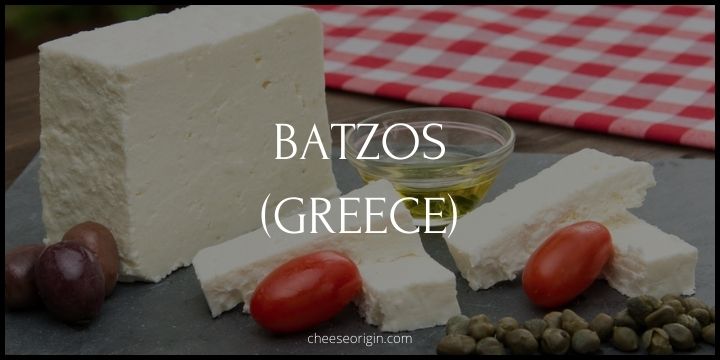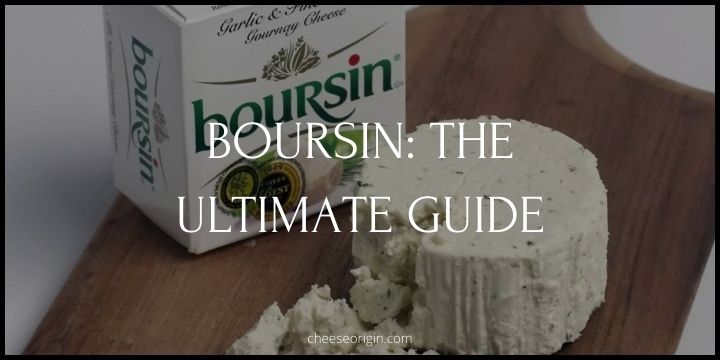What is Saint Albray? France’s Unique Floral Cheese

Nestled in the heart of France’s rich cheese tradition lies Saint Albray, a cheese that stands out even among its distinguished peers. This semi-soft delicacy, adorned with its characteristic floral pattern, offers an exquisite journey of flavors, from its buttery texture to its delicate balance of sweetness and tang. Rooted in the culinary heritage of Gascony, Saint Albray is not just a cheese, but a testament to the innovation and finesse of French cheesemaking.
Quick Facts About Saint Albray
| Quick Facts | Details |
|---|---|
| Origin | France, specifically the Aquitaine region |
| Type | Semi-soft, artisanal |
| Milk | Cow’s milk |
| Shape | Flower-shaped, typically cut into wedges |
| Weight | Around 1 kg |
| Flavor | Mild, slightly sweet with a hint of nuttiness |
| Texture | Creamy, smooth, and supple |
| Rind | Edible, bloomy rind that is slightly grainy |
| Aging Time | 2 to 3 weeks |
| Pairings | Red wine, fruits, crusty bread |
| Serving Suggestions | Room temperature for best flavor |
| Popular Uses | Cheese plates, sandwiches, salads |
| Best Season for Production | Spring and summer |
| Similar Cheeses | Camembert, Brie |
| Unique Feature | Recognizable by its unique flower shape |
| Storage | Keep refrigerated, wrap in wax paper or cheese paper after opening |
What is Saint Albray?

Saint Albray is a French cheese that stands out, not just for its distinctive flavor, but also for its eye-catching flower shape. Originating from the beautiful region of Aquitaine in France, the cheese is a celebration of artistry and tradition.
Made with pasteurized cow’s milk, Saint Albray ripens for two weeks, developing a creamy texture and a mild, slightly sweet taste with a hint of nuttiness. The cheese is a testament to the rich and diverse flavors that come from this part of the world.
Saint Albray was first created in the 1970s, designed to echo the smoothness of Camembert but with a milder flavor profile. Its unique aging process allows it to develop robust and hearty flavors. Each petal of the cheese consists of a half, which is symbolic of the cheese’s flower-like appearance.
Often referred to as “the stinky flower cheese”, Saint Albray is no wallflower when it comes to its aroma. However, this aroma belies a surprisingly light taste that pairs well with a variety of foods, from sweet fruits to crusty bread. It’s a versatile addition to any cheese plate and an excellent partner for nut breads.
For those seeking a journey into the heart of French cheese culture, Saint Albray offers a unique experience. Its combination of traditional cheese-making techniques, aesthetic appeal, and delightful flavor make it a must-try cheese for both connoisseurs and casual cheese lovers alike.
What Does Saint Albray Taste Like?
Saint Albray is often celebrated for its mild yet distinctive flavor. The taste of this semi-soft cheese is slightly sweet, with a hint of nuttiness. As it ages, the flavors become more pronounced and robust.
The cheese has a creamy, supple texture that melts in your mouth. It’s rich without being overpowering, making it a delight for those who prefer milder cheeses. Saint Albray’s bloomy rind is also edible and adds a subtle grainy contrast to the smoothness of the cheese itself.
When served at room temperature, the flavors of Saint Albray truly bloom, revealing a complexity that pairs well with a variety of foods and wines. Whether you’re savoring it on its own or as part of a cheese plate, Saint Albray offers an enjoyable gastronomic experience.
Saint Albray Tasting Notes
- Flavor Profile: Saint Albray has a mild, slightly sweet taste with a hint of nuttiness. The flavor becomes more robust as it ages.
- Texture: This semi-soft cheese has a creamy, supple texture that melts in your mouth.
- Rind: The bloomy, edible rind adds a subtle grainy contrast to the smoothness of the cheese.
- Aroma: Saint Albray has a distinct aroma that may be strong for some, but it belies a surprisingly light taste.
- Unique Characteristics: The cheese is recognizable by its unique flower shape, and it’s often referred to as “the stinky flower cheese”.
How to Eat Saint Albray?
- Cheese Platter: Due to its unique flower shape and appealing flavor, Saint Albray serves as a fantastic centerpiece on a cheese platter. Pair it with a variety of other cheeses, fresh fruits, and nuts for a balanced spread.
- Bread Pairing: Its creamy texture and mild flavor make Saint Albray an excellent partner for crusty bread or even soft, warm baguettes. Try it with nut bread for a delightful contrast.
- Wine Pairing: Saint Albray pairs wonderfully with wines. A full-bodied red wine like a Cabernet Sauvignon or a Merlot complements the cheese’s rich flavors. If you prefer white wine, a crisp Chardonnay can also work well.
- In Cooking: Melt Saint Albray over roasted vegetables or use it in a fondue for a delicious twist. Its melting quality makes it a great addition to gratins and quiches.
- With Sweet Pairings: For a sweet touch, pair Saint Albray with honey or fig jam. The sweetness contrasts beautifully with the cheese’s mild nuttiness.
- Serving Temperature: To fully appreciate the flavors of Saint Albray, serve it at room temperature. Remove it from the refrigerator about an hour before serving.
- Tasting Order: When served with other cheeses, save Saint Albray for mid-tasting. Its flavor is stronger than mild cheeses like Brie but milder than blue cheese, so it fits nicely in the middle.
- Storage: Store Saint Albray in a cool place, preferably in the lower part of the refrigerator. Wrap it in parchment paper or aluminum foil to maintain its freshness.
10 Best Saint Albray Substitutes
| Substitute | Description |
|---|---|
| Camembert | This French cheese is also creamy and has a similar edible rind to Saint Albray. It has a strong, fruity flavor that can be a good substitute if you’re looking for a bit more punch. |
| Brie | Brie is another French cheese with a bloomy rind and a buttery, mild flavor. It’s softer than Saint Albray but makes for an excellent alternative. |
| Chaumes | Chaumes is a semi-soft cheese from France with a rich, creamy texture and a powerful aroma. Its tangy, slightly sweet flavor can replace Saint Albray in many dishes. |
| Port-Salut | This semi-soft cheese from France has a mild flavor and a smooth, velvety texture. It’s less sweet than Saint Albray, but it melts well, making it a good substitute in cooked dishes. |
| Reblochon | Reblochon is a soft washed-rind cheese from the Alps. It has a nutty taste that’s somewhat similar to Saint Albray, and its creaminess makes it a great alternative. |
| Taleggio | Taleggio is an Italian cheese with a strong aroma but a relatively mild flavor. Its creamy texture and fruity tang make it a good stand-in for Saint Albray. |
| Fontina | Fontina is an Italian cheese known for its excellent melting qualities. It has a mild, slightly nutty flavor that’s similar to Saint Albray. |
| Munster | Munster is a soft cheese with a powerful aroma and a robust flavor. It’s stronger than Saint Albray, but if you love potent cheeses, it can be a good substitute. |
| Saint-Nectaire | This semi-soft cheese from France has a creamy texture and a fruity, nutty flavor. It’s less sweet than Saint Albray but makes a good alternative due to its similar texture. |
| Pont l’Eveque | Pont l’Eveque is a French cheese with a creamy texture and a full-bodied flavor. It’s more potent than Saint Albray, but it can be a good substitute if you’re looking for a stronger taste. |
What Pairs Well With Saint Albray?

Food that goes well with Saint Albray:
| Category | Food |
|---|---|
| Bread & Crackers | Baguette, Sourdough, Whole Grain Crackers, Walnut Bread |
| Fruits | Grapes, Apples, Figs, Pears, Berries |
| Nuts | Walnuts, Almonds, Pecans |
| Meats | Prosciutto, Salami, Smoked Salmon |
| Jams & Spreads | Fig Jam, Apricot Preserves, Honey, Quince Paste |
| Vegetables | Roasted Red Peppers, Marinated Artichokes, Olives |
| Desserts | Dark Chocolate, Fruit Tarts, Crepes |
| Other Cheeses | Brie, Camembert, Gouda |
| Herbs & Spices | Rosemary, Thyme, Black Pepper, Garlic |
| Savory Extras | Pickles, Sun-dried Tomatoes, Anchovies |
Also read: 11 Best Crackers that Pair Well with Cheese
Beverage that goes well with Saint Albray:
| Category | Beverage |
|---|---|
| Red Wine | Cabernet Sauvignon, Merlot, Pinot Noir |
| White Wine | Chardonnay, Sauvignon Blanc, Riesling |
| Beer | Belgian Ales, Brown Ales, Wheat Beers |
| Non-Alcoholic | Sparkling Water, Apple Cider, Grape Juice |
| Spirits | Whisky, Brandy, Port |
| Champagne | Brut, Rose, Blanc de Blancs |
| Cider | Dry Cider, Semi-Sweet Cider, Apple-Pear Cider |
| Tea | Earl Grey, Green Tea, Chamomile |
| Coffee | Espresso, French Press, Latte |
| Dessert Wine | Sauternes, Moscato, Ice Wine |
Also read: Best Wine and Cheese Pairings: The Ultimate Guide
Also read:
- What is Idiazabal? A Taste of the Basque Country
- What is Bûcheron? France’s Versatile Goat Cheese
- What is Merlot Bellavitano? The Perfect Union of Wine and Cheese
- What is Lagrein? The Italian Cheese Washed in Wine
- What is Leerdammer? A Dutch Cheese Classic
- What is Brusselse Kaas? Belgium’s Unique Cheese
- Top 11 Most Popular Washed-rind Cheeses in the World





